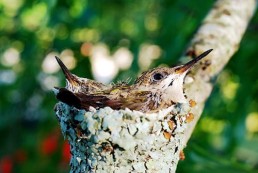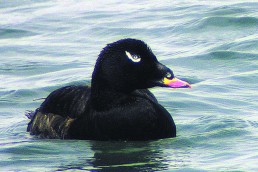Bees, Butterflies and Birds
SHARE THIS POST
As anyone who’s spent much time in the outdoors knows, habitat is the critical element when it comes to wildlife. Unfortunately in the Upper Midwest, habitat is becoming hard to find, and because of this in many areas, wildlife will suffer.
What is habitat? It’s an area that offers feeding, roosting, breeding, nesting and refuge areas for a variety of bird and mammal species. When it comes to habitat, the larger the better, as smaller tracts of habitat create a lane or corridor for the predators to hunt, but every little bit helps.
In some areas there still are sloughs, which are excellent habitat throughout the year, but they too are disappearing at an alarming rate.
The number one discussed topic will be how to improve habitat for pheasants. A pheasant needs a variety of cover in order to survive, including overhead cover in the daylight hours and roosting cover (off the ground) and dense cover for warmth, during the night. If this cover is adjacent to a water supply and a food source, such as corn, watch out, this is where you’ll find them. If you want to increase your chances, hunt these areas in the morning and in the late afternoon, when most of the birds are the most active and are in huntible cover.
Why did 2014 have fewer habitat areas in pheasant country than 2007? According to the Department of Natural Resources, “ … In 2007, Minnesota hunters shot 655,000 pheasants—the highest tally in more than 40 years. Last year, after losing 93,000 acres (145 square miles) of grasslands over the years, hunters bagged just 169,000 pheasants, the lowest in 28 years.”
Over two-thirds of America’s land, including some of the most important fish and wildlife habitat, is in private hands. But these private wetlands, grasslands, and forest are being converted to cropland at an alarming rate, threatening our wildlife populations, our water quality and our rural economies.
Ginny and I had an opportunity to sit down with some officials from the Theodore Roosevelt Conservation Partnership and Natural Resource Conservation Service, an Iowa DNR private land biologist, and three farmers from the Loess Hills area in Akron, Iowa to discuss habitat and what the public, politicians and private landowners can do to stop the loss.
According to the TRCP (Theodore Roosevelt Conservation Partnership), they work with 46 national groups such as Pheasants Forever, Quail Forever, Ruffed Grouse Society, Trout Unlimited, Izaak Walton League, Association of Fish and Wildlife Agencies, National Wild Turkey Federation and many more.
While discussing the loss of habitat, TRCP’s Ariel Wiegard said, “Thankfully, sound conservation programs exist to provide farmers, ranchers, and forest owners with viable, voluntary alternatives to boosting production on marginal and fragile lands.“(If you have ever visited the Loess Hills in Western Iowa you will see these conditions.)
Are you enjoying this post?
You can be among the first to get the latest info on where to go, what to use and how to use it!
Wiegard says many of these programs are found in the federal farm bill, the single largest source of funding for habitat conservation and access to private land. Just a few examples of the farm bill initiatives extremely important to sportsmen and wildlife are:
- Agricultural Conservation Easement Program and Wetlands Reserve Easements
- Conservation Compliance/ Crop Insurance/Sodsaver
- Conservation Reserve Program (CRP)
- Conservation Stewardship Program
- Environmental Quality Incentives Program
- Regional Conservation Partnership Program
- Voluntary Public Access and Habitat Incentives.
What can sportsmen/sportswomen, individuals, politicians and landowners do to halt this devastation of wildlife and habitat? Contact and urge your representatives to pass the farm bill. If you are reading this after this current bill has been voted on, get involved before the next bill is passed.
Incentives for voluntary private lands conservation also exist outside of the farm bill, for example, through enhanced tax deductions for the donation of conservation easements, the Land and Water Conservation Fund, the North American Wetlands Conservation Act and the Partners for Fish and Wildlife program. In order to ensure quality days afield for the American sportsman, we need to support and promote all policies that balance the needs of production agriculture with the needs of fish and wildlife.
The Iowa DNR launched a public relations program called “They Gotta’ Have Cover.” The Iowa DNR said, “With almost 97 percent of Iowa’s land in private hands, landowners like you are the best hope to recover grasslands, and pheasant and other grassland bird populations. Both are declining. From 1960 to 2008, Iowa’s hay acres and small grain crops declined from more than 7 million acres to 3.4 million. Pheasants, quail, gray partridge and songbird populations trends have followed the land use trends.”
What can we do? Providing the right habitat for grassland birds produces more wildlife. A DNR study showed 6.4 pheasant roosters per stop on managed farms vs. 2 roosters on unmanaged farms. Quail counts were similar, as over 90 percent of hens survived a mild winter, but only 20 percent lived through snowfalls of 50 inches. No hens—no chicks. Pheasant hens’ success at nesting varies from 60 percent in warm, dry springs to 23 percent in cool, wet springs. Populations decline when spring rains are 8 inches or more according to the study.
Flowers attract insects (this is where the bees and butterflies help the birds). They are not only pollinators, but also a food source for the birds. Ninety percent of a chick’s diet during its first month comes from these insects. Also, tiny chicks can’t push through dense grass, but a flower/grass mix is easy to navigate.
Whether we’re landowners, members of national groups, or concerned individuals, we need to help and provide shelterbelts for winter habitat, and a safe place for birds to rest and eat. We need to encourage planting and maintenance of grass for pheasants to nest at least 10 to 12 inches high, so hens can get out of the elements. We also need to provide a lot of flowering plants for chicks to bring a lot of bugs their way.
This in turn will provide mankind with better quality water, prevent droughts, contain and slow down flooding, so the bees, butterflies and birds will have a better place to live.
Did you enjoy this post?
You can be among the first to get the latest info on where to go, what to use and how to use it!

